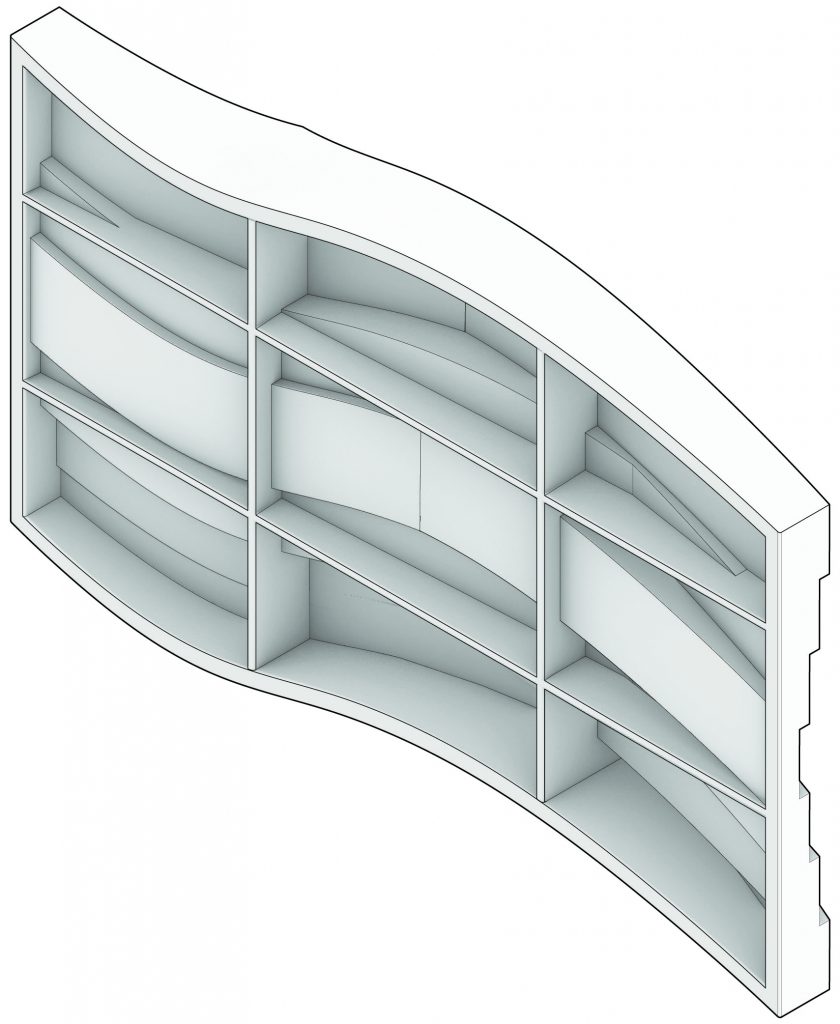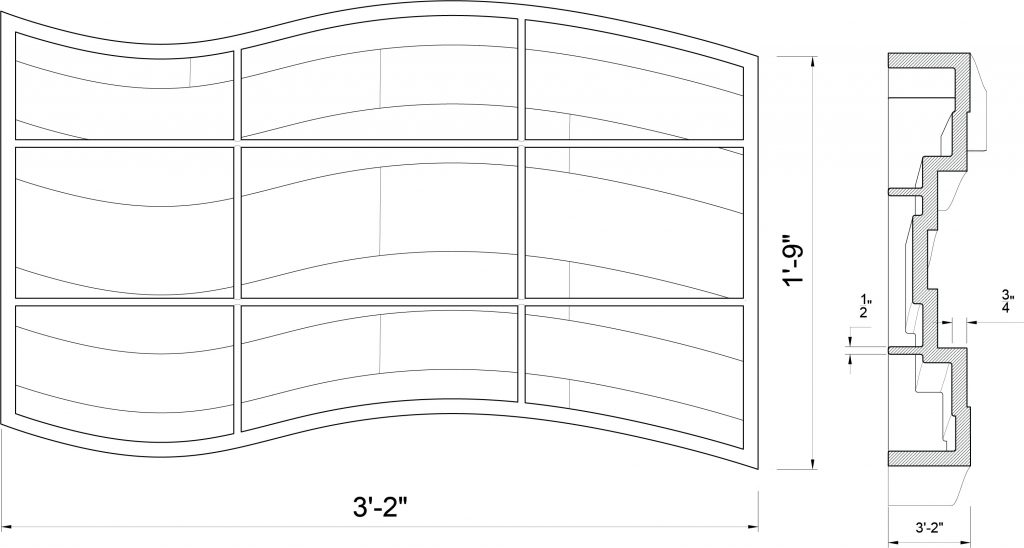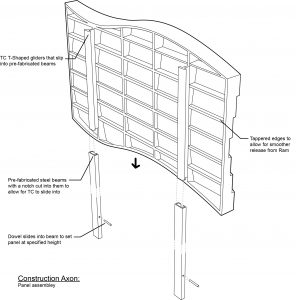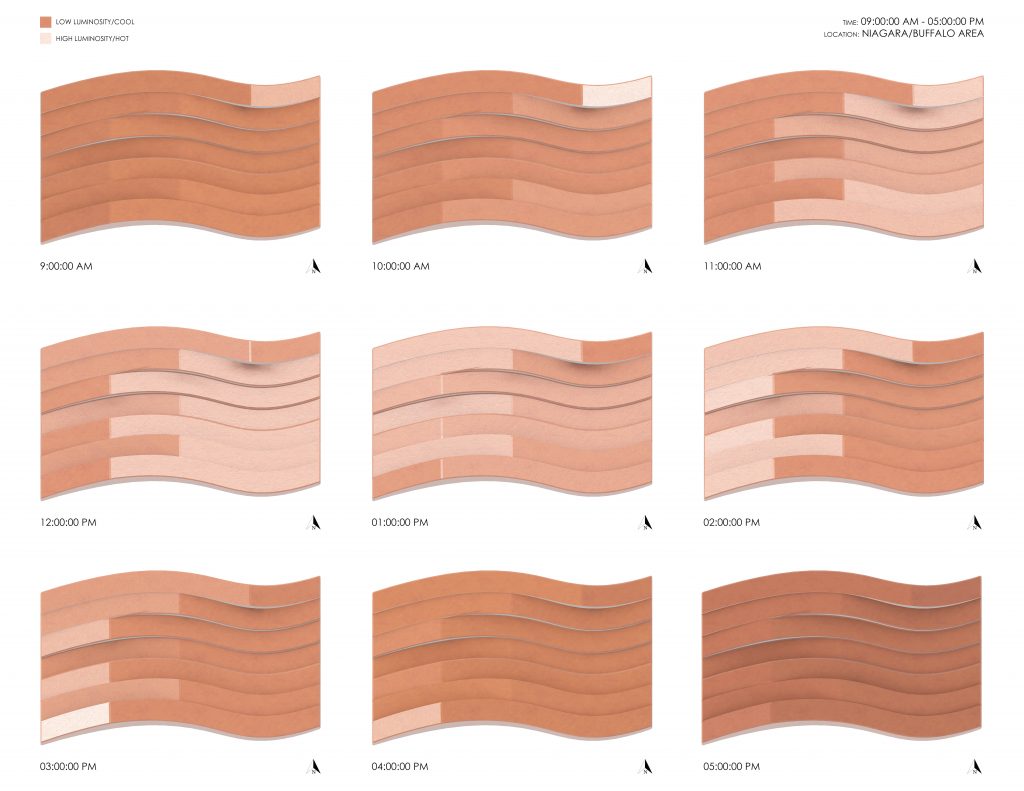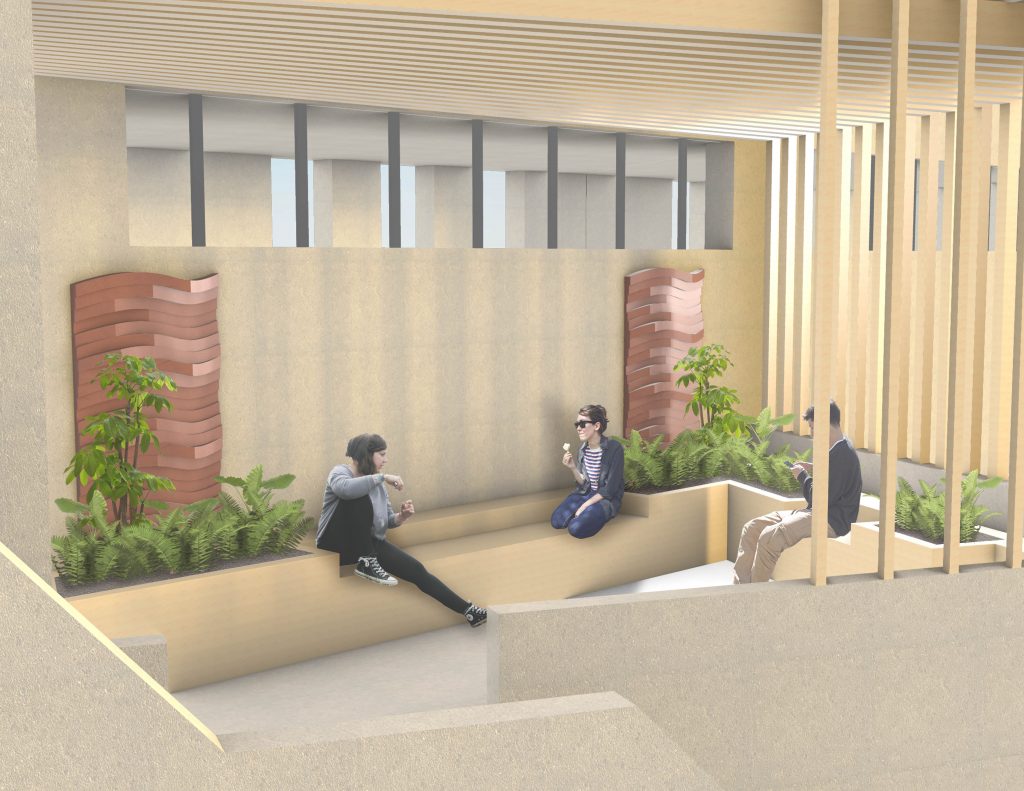Terrasol is a terra cotta fabricated façade module that exemplifies qualities of sun pattern reaction on the material surfaces. One discussion that took place during our final review was the implication of the seam when the module transitions in the horizontal direction. The seam that is created in a sequence consists of a quality that can potentially further exemplify the sun-ray/terra cotta relationship.
Another discussion that took place was the relationship between the terra cotta module in context with conventional materials such as a brick masonry system. We had brief moments of that representation in renderings, but a further exploration of the relationship between the module and other materials can be an interesting venture.


